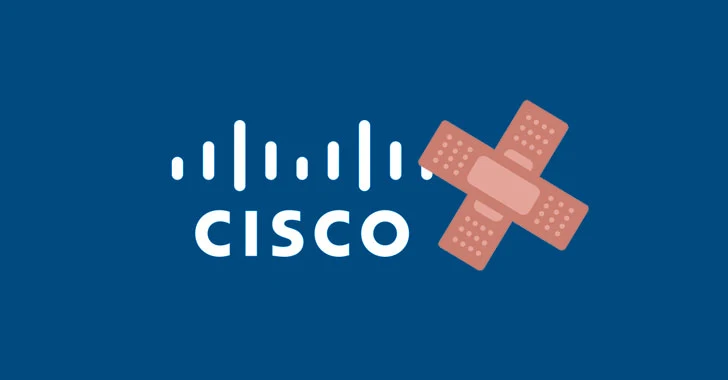Summary
Multiple vulnerabilities in Cisco Identity Services Engine (ISE) could allow an authenticated, remote attacker to execute arbitrary commands and elevate privileges on an affected device.
Note: To exploit these vulnerabilities, an attacker must have valid ISE administrative credentials. These vulnerabilities can be exploited using any valid administrative account, including read-only administrative accounts.
For more information about these vulnerabilities, see the Details section of this advisory.
Cisco has released software updates that address these vulnerabilities. There are no workarounds that address these vulnerabilities.
This advisory is available at the following link:
https://sec.cloudapps.cisco.com/security/center/content/CiscoSecurityAdvisory/cisco-sa-ise-multivuls-FTW9AOXF
Affected Products
Vulnerable Products
These vulnerabilities affect Cisco ISE and Cisco ISE Passive Identity Connector (ISE-PIC), regardless of device configuration.
For information about which Cisco software releases are vulnerable, see the Fixed Software section of this advisory.
Products Confirmed Not VulnerableOnly products listed in the Vulnerable Products section of this advisory are known to be affected by these vulnerabilities.
Details
The vulnerabilities are not dependent on one another. Exploitation of one of the vulnerabilities is not required to exploit the other vulnerability. In addition, a software release that is affected by one of the vulnerabilities may not be affected by the other vulnerability.
Details about the vulnerabilities are as follows:
CVE-2025-20124: Cisco ISE Insecure Java Deserialization Vulnerability
A vulnerability in an API of Cisco ISE could allow an authenticated, remote attacker to execute arbitrary commands as the root user on an affected device.
This vulnerability is due to insecure deserialization of user-supplied Java byte streams by the affected software. An attacker could exploit this vulnerability by sending a crafted serialized Java object to an affected API. A successful exploit could allow the attacker to execute arbitrary commands on the device and elevate privileges.
Note: To exploit these vulnerabilities, an attacker must have valid ISE administrative credentials. These vulnerabilities can be exploited using any valid administrative account, including read-only administrative accounts. In a single-node deployment, new devices will not be able to authenticate during the reload time.
Cisco has released software updates that address this vulnerability. There are no workarounds that address this vulnerability.
Bug ID(s): CSCwk14916
CVE ID: CVE-2025-20124
Security Impact Rating (SIR): Critical
CVSS Base Score: 9.9
CVSS Vector: CVSS:3.1/AV:N/AC:L/PR:L/UI:N/S:C/C:L/I:H/A:H
CVE-2025-20125: Cisco ISE Authorization Bypass Vulnerability
A vulnerability in an API of Cisco ISE could allow an authenticated, remote attacker to obtain sensitive information, change node configurations, and restart the node.
This vulnerability is due to a lack of authorization in a specific API and improper validation of user-supplied data. An attacker could exploit this vulnerability by sending a crafted HTTP request to a specific API on the device. A successful exploit could allow the attacker to attacker to obtain information, modify system configuration, and reload the device.
Note: To exploit these vulnerabilities, an attacker must have valid ISE administrative credentials. These vulnerabilities can be exploited using any valid administrative account, including read-only administrative accounts. In a single-node deployment, new devices will not be able to authenticate during the reload time.
Cisco has released software updates that address this vulnerability. There are no workarounds that address this vulnerability.
- Bug ID(s): CSCwk14901
CVE ID: CVE-2025-20125
Security Impact Rating (SIR): Critical
CVSS Base Score: 9.1
CVSS Vector: CVSS:3.1/AV:N/AC:L/PR:L/UI:N/S:C/C:L/I:L/A:H
Workarounds
There are no workarounds that address these vulnerabilities.
Fixed Software
Cisco has released free software updates that address the vulnerabilities described in this advisory. Customers with service contracts that entitle them to regular software updates should obtain security fixes through their usual update channels.
Customers may only install and expect support for software versions and feature sets for which they have purchased a license. By installing, downloading, accessing, or otherwise using such software upgrades, customers agree to follow the terms of the Cisco software license:
https://www.cisco.com/c/en/us/products/end-user-license-agreement.html
Additionally, customers may only download software for which they have a valid license, procured from Cisco directly, or through a Cisco authorized reseller or partner. In most cases this will be a maintenance upgrade to software that was previously purchased. Free security software updates do not entitle customers to a new software license, additional software feature sets, or major revision upgrades.
The Cisco Support and Downloads page on Cisco.com provides information about licensing and downloads. This page can also display customer device support coverage for customers who use the My Devices tool.
When considering software upgrades, customers are advised to regularly consult the advisories for Cisco products, which are available from the Cisco Security Advisories page, to determine exposure and a complete upgrade solution.
In all cases, customers should ensure that the devices to be upgraded contain sufficient memory and confirm that current hardware and software configurations will continue to be supported properly by the new release. If the information is not clear, customers are advised to contact the Cisco Technical Assistance Center (TAC) or their contracted maintenance providers.
Customers Without Service Contracts
Customers who purchase directly from Cisco but do not hold a Cisco service contract and customers who make purchases through third-party vendors but are unsuccessful in obtaining fixed software through their point of sale should obtain upgrades by contacting the Cisco TAC: https://www.cisco.com/c/en/us/support/web/tsd-cisco-worldwide-contacts.html
Customers should have the product serial number available and be prepared to provide the URL of this advisory as evidence of entitlement to a free upgrade.
Fixed Releases
In the following table, the left column lists Cisco software releases. The right column indicates whether a release is affected by the vulnerabilities that are described in this advisory and the first release that includes the fix for these vulnerabilities. Customers are advised to upgrade to an appropriate fixed software release as indicated in this section.

For instructions on upgrading a device, see the Upgrade Guides located on the Cisco Identity Service Engine support page.
The Cisco Product Security Incident Response Team (PSIRT) validates only the affected and fixed release information that is documented in this advisory.


Stay connected